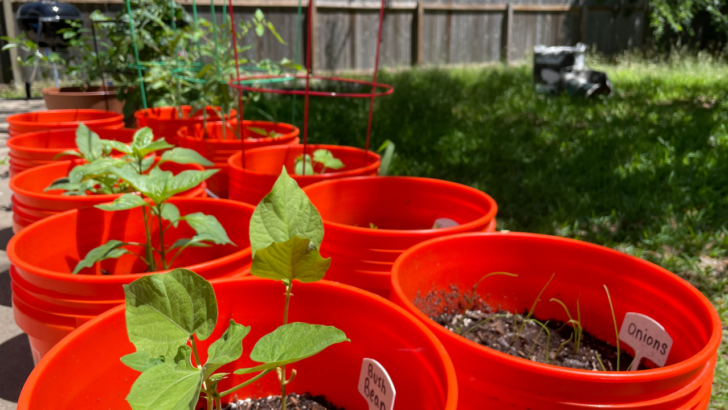Dreaming of creating your own veggie garden? You’re not alone. In the most recent National Gardening Survey, a whopping 88% of respondents are taking part in gardening activities–a number that has grown by 10% from pre-Pandemic years. But many non-gardeners in the survey said they’d given up gardening due to a lack of space.
The good news is, you don’t have to give up on your dreams of fresh veggies straight from your garden just because you don’t actually have a garden plot. Limited space can be an opportunity for a little creativity. Or maybe you’ve already used all your gardening space and just can’t stop yourself from planting a few more vegetables–no judgement.
Either way, a portable bucket garden may be your answer.
Buckets of Benefits
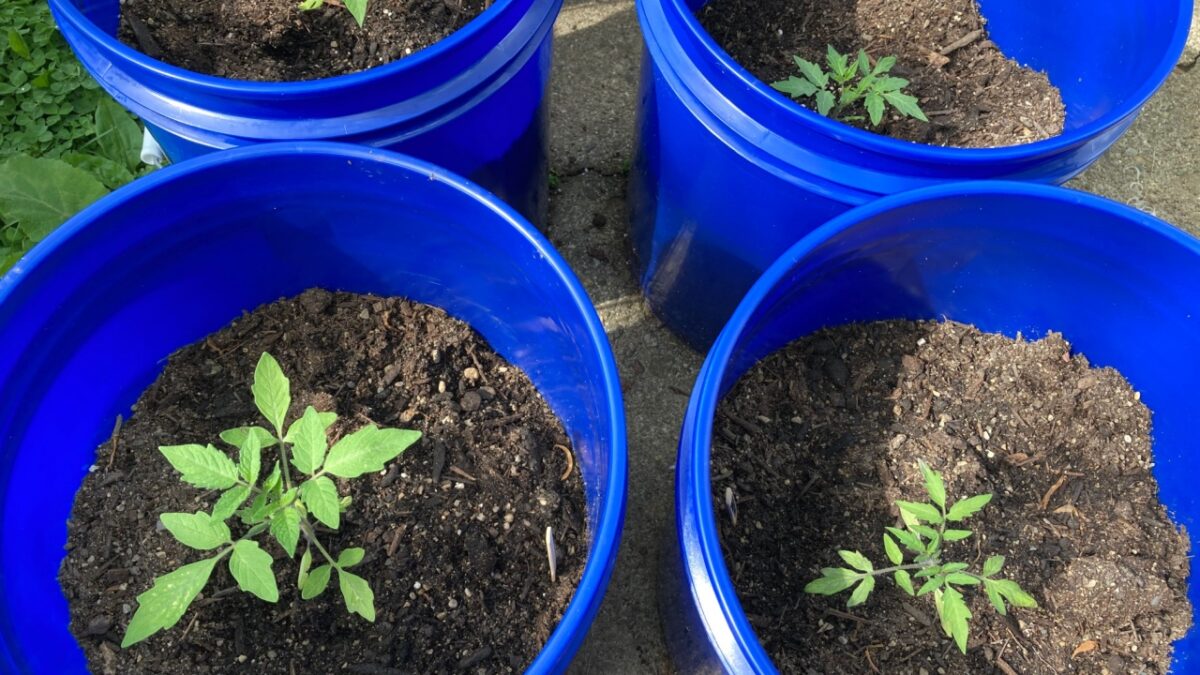
Image Credit: Shutterstock.
Saving space isn’t the only upside to growing vegetables in buckets. We’ve gathered info from the Old Farmer’s Almanac and the National Gardening Association to explore the perks of bucket gardening, important planting tips to keep in mind, and the veggies best suited to grow in containers.
If your growing space is also limited by available sunlight, planting in buckets allows you to move your plants throughout the day to chase down as many sunlight hours as possible–or even bring them inside for shelter against summer hailstorms or early spring freezes.
Another bonus is that planting in buckets will cut down on weeding. And 5-gallon buckets are inexpensive, especially if you already have some around the house (you can even repurpose leaky buckets, more on that next).
Before Getting Started: A Reminder That Water is Key
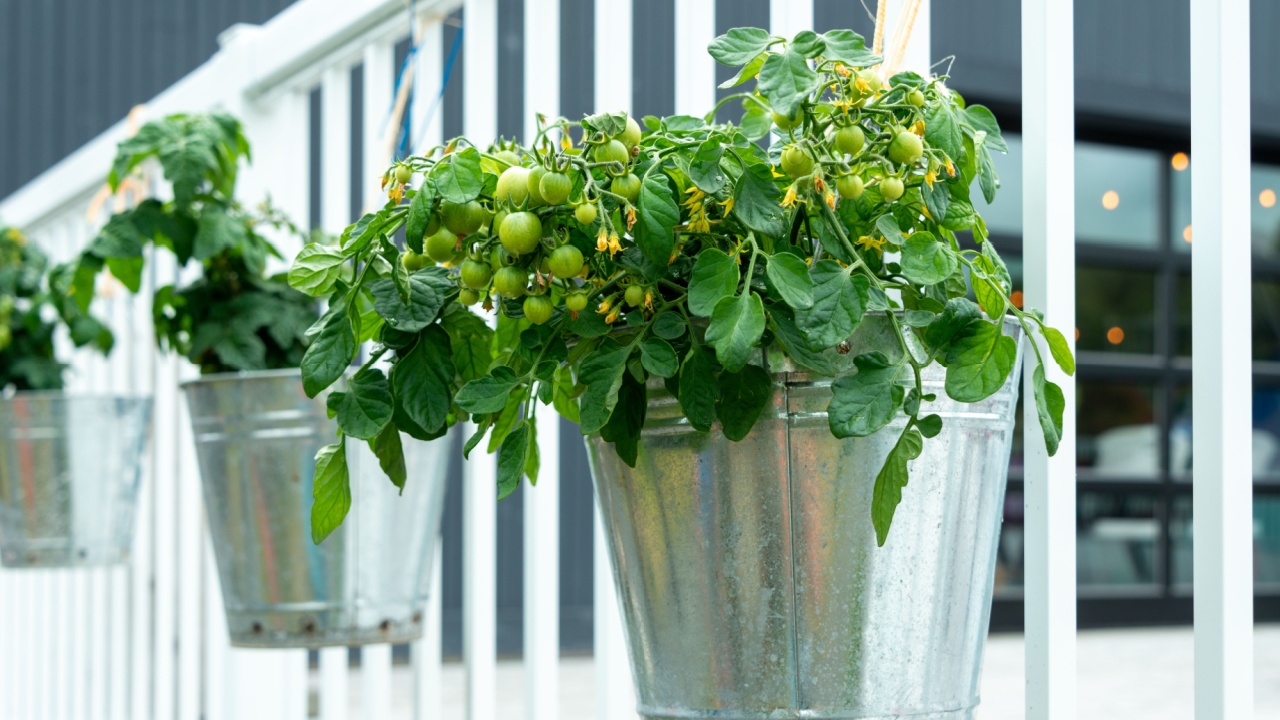
Image Credit: Shutterstock.
Have a bucket? Perfect. Time to fill that bucket full of holes!
Seriously. This bucket is no longer for holding water. In fact, according to the National Gardening Association, it’s crucial that you drill holes to allow water to drain properly from the soil within, as waterlogged soil will quickly give your vegetables root rot. It can be helpful to prop your bucket up off the ground a little, as well, to make sure the water can freely drain out.
That said, you don’t want your soil to be totally dry, either. Your vegetables will need plenty of water to grow and produce, especially larger plants like tomatoes. You may need to water them once or even twice a day. The key is keeping that soil evenly moist, without making it sopping wet.
Best Plants for Buckets
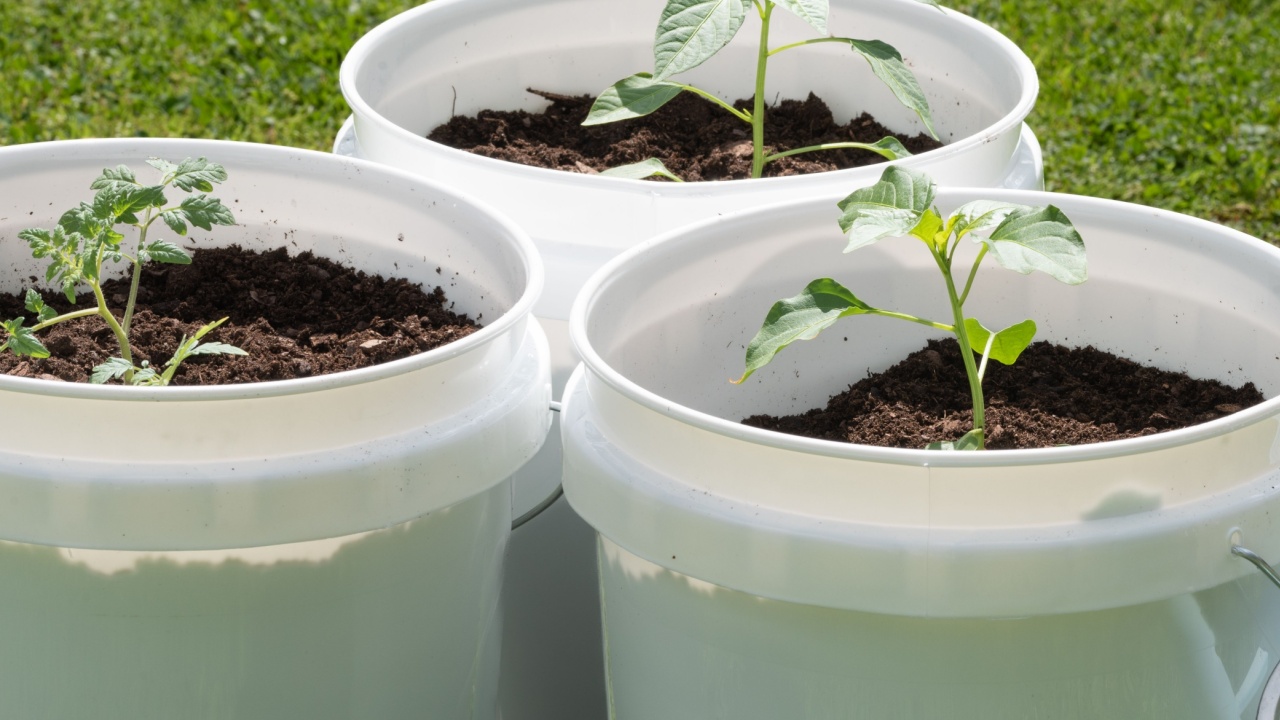
Image Credit: Shutterstock.
A wide variety of vegetable plants will grow and thrive in buckets, though sticking to mini or dwarf varieties will set you up for the most success. Generally, you’ll want to choose plants that don’t need a lot of space to grow. Sweet corn, for example, may technically grow in a bucket, but its height will make it top-heavy and a tipping hazard. Pumpkins have vines that need to spread, so they may struggle to thrive in buckets, as well.
The opportunities, while not totally endless, are certainly plentiful! Here are a few ideas to get you started on your bucket vegetable garden.
Tomatoes
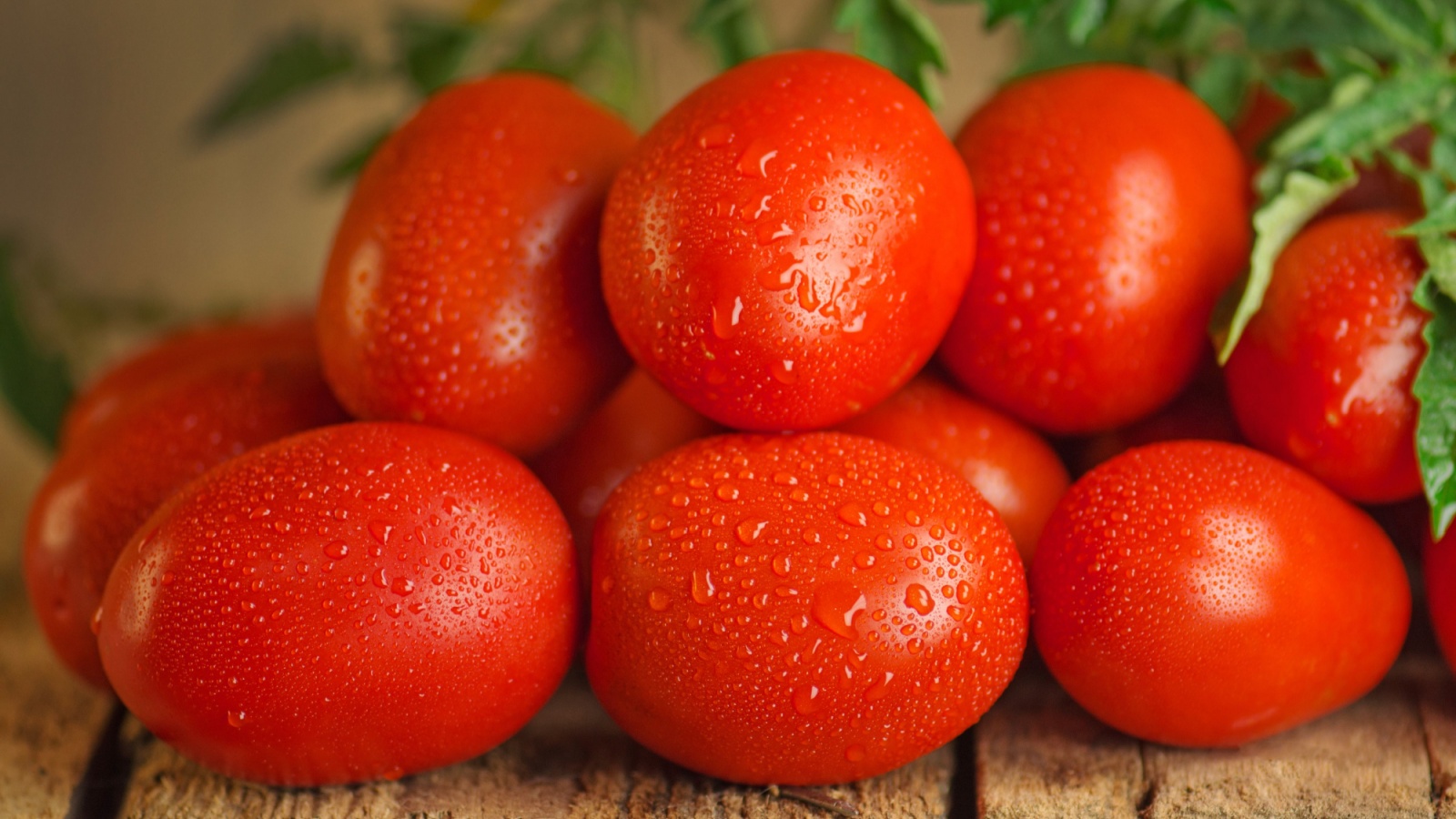
Image Credit: Shutterstock.
Tomatoes are a veggie garden staple and are great candidates for your bucket garden. Plus, they’re a crowd favorite since homegrown tomatoes taste infinitely better than those at the store (ask any gardener or BLT lover).
Bush or dwarf variety tomato plants do well growing in smaller spaces, and you won’t have to come up with creative ways to support wildly spreading vines. For big slicer tomatoes, try Bush Early Girl or Bush Beefsteak. Cherry tomatoes like Red Robin and Tiny Tim are good choices, as well.
Peppers
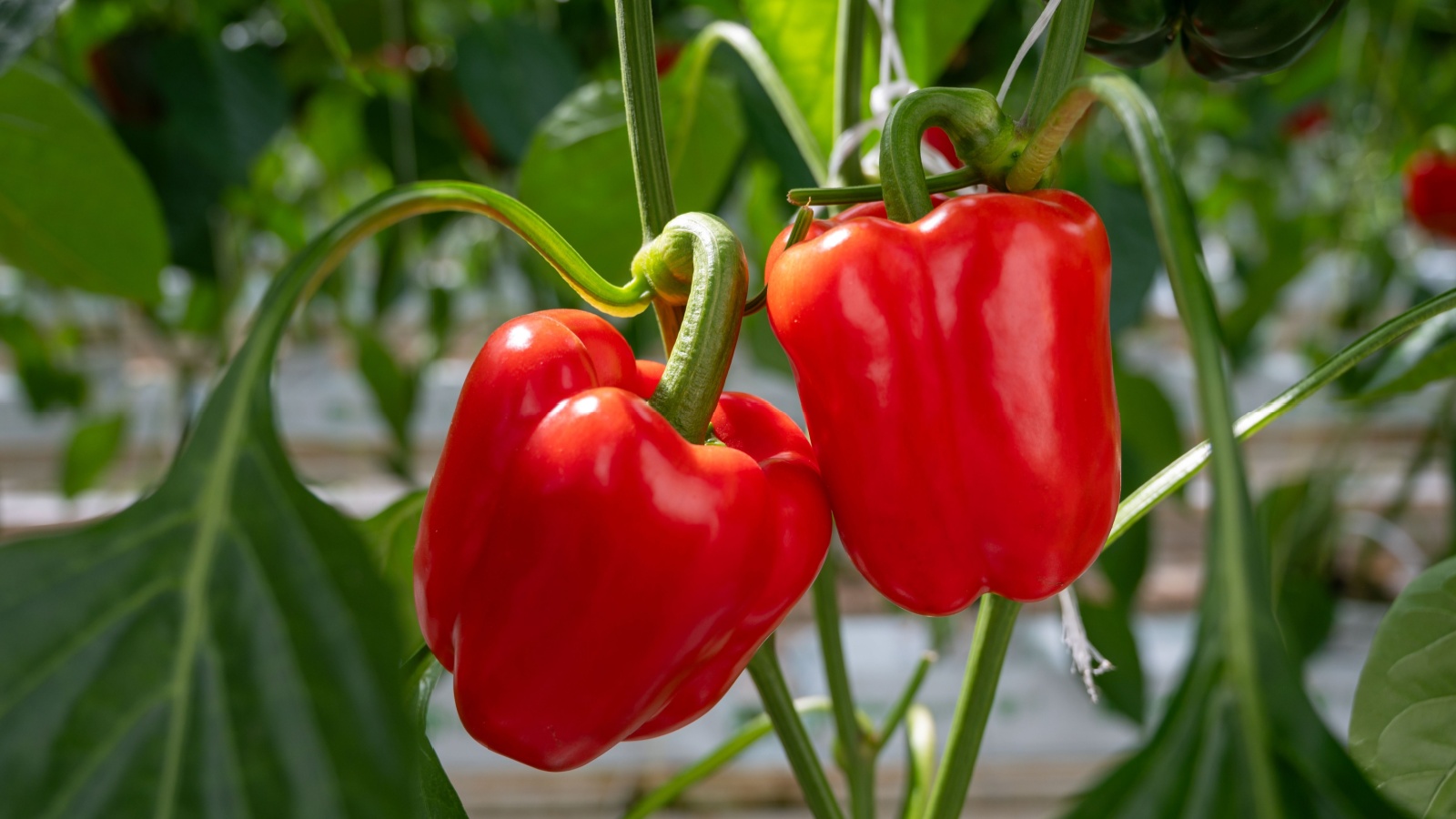
Image Credit: Shutterstock.
Peppers can add spice to your plate, and some lovely decorative color to your container garden. Small varieties like Mini-Belle Mix and Sweet Heat can even go in containers smaller than a 5-gallon bucket–as can Thai Hot, if you’re feeling bold.
Keep in mind that peppers thrive in the heat, so make sure you have a sunny spot to put these in your yard or patio.
Eggplants
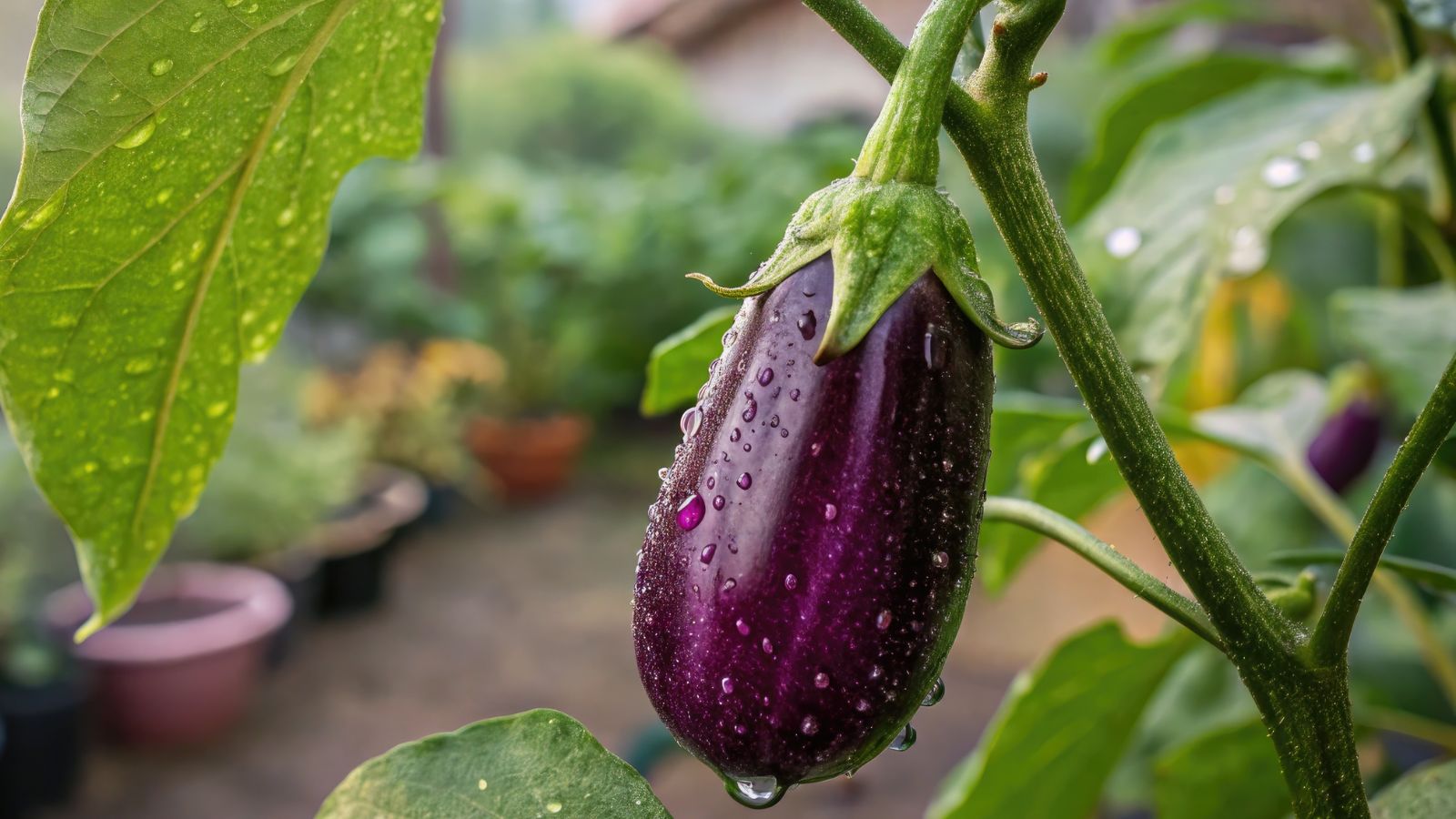
Image Credit: YayImages
Eggplant is another delicious and decorative vegetable, boasting lovely purple flowers before it fruits. And it’s such a versatile addition to meals in a variety of cuisines, ranging from Asian to Italian (eggplant parmesan, anyone?).
Patio Baby and Fairy Tale varieties both grow small fruits no bigger than 4 inches long. Fairy Tale even has pretty lavender and white stripes, offering function and beauty.
Carrots

Image Credit: Deposit Photos.
Root vegetables like carrots are also prime candidates for bucket gardening, as 5-gallon buckets are deep and wide enough to provide them enough room to grow.
You’ll still want to pick smaller varieties, though, like Short n’ Sweet. That way, they won’t be limited by the constraints of container depth like some larger varieties would.
Potatoes
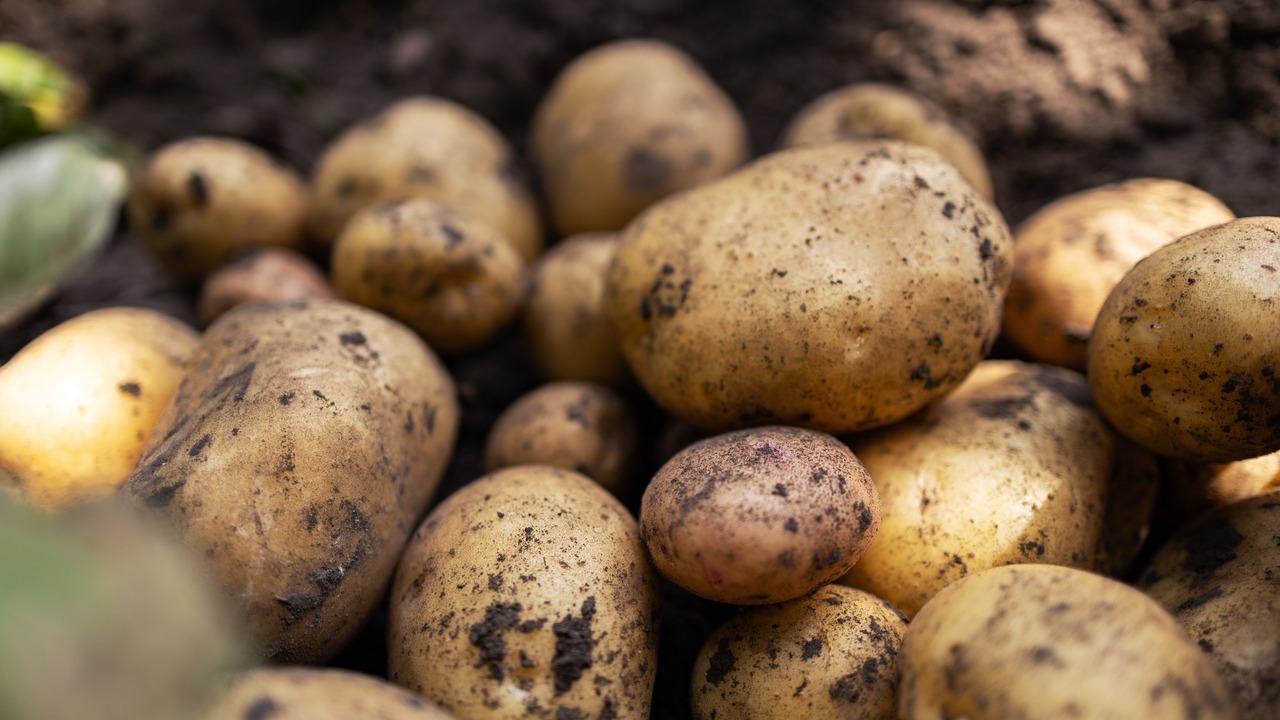
Image Credit: Shutterstock.
Another great root veggie that will grow in a bucket–although it will need to be a larger, 10- or 15-gallon one. They can do even better in bags (more on that below).
Smaller “new” potatoes often grow better in containers than the larger russets. Or, if you’re feeling extra thrifty, you can even plant those potatoes from the grocery store that started to sprout after you forgot them in the cupboard (hey, it happens to everyone). If they’re big, cut them into pieces with one or two eyes per piece.
Cucumbers
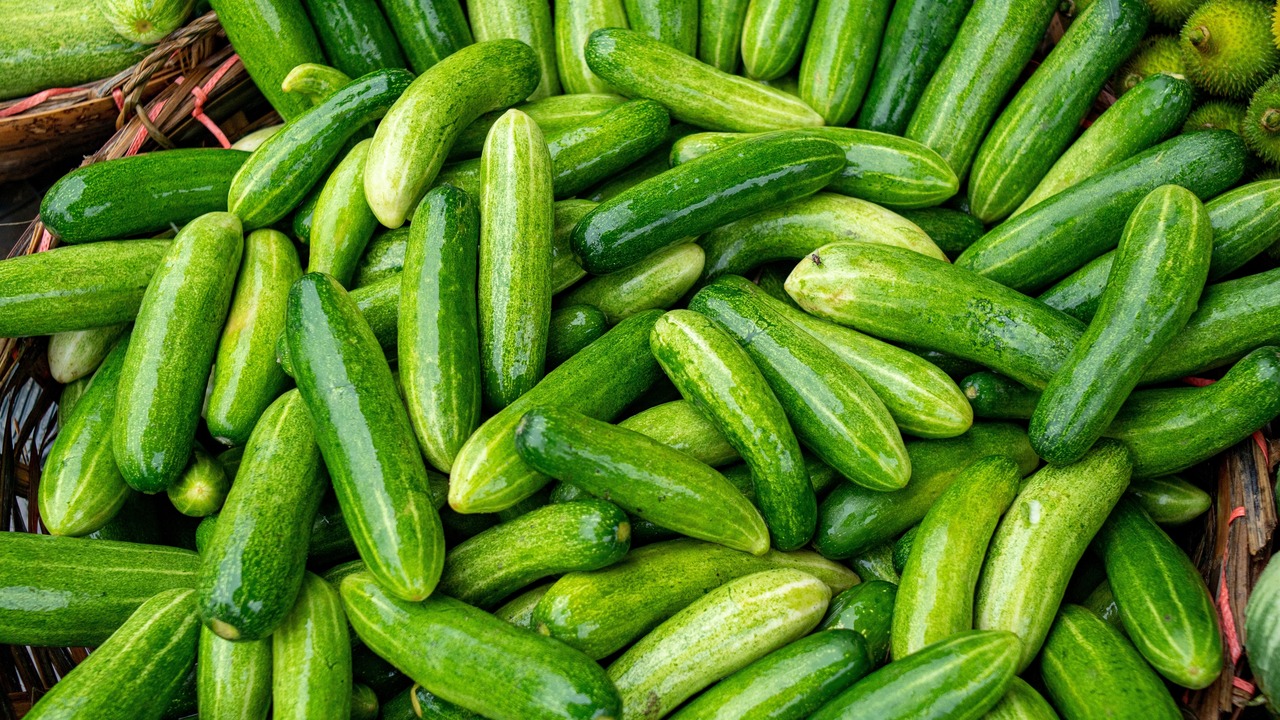
Image Credit: Shutterstock.
Time to think up! Vertical gardening is another clever way to grow an abundance of vegetables with limited space. It’s such a genius way to maximize yield and protect plants from bugs and diseases, too.
For cucumbers, you’ll want to provide a trellis along the back of your bucket for the vines to grow up. The aptly-named Spacemaster variety is a good option. Cucumbers can even go in a smaller, 1-gallon bucket, as well.
Beans
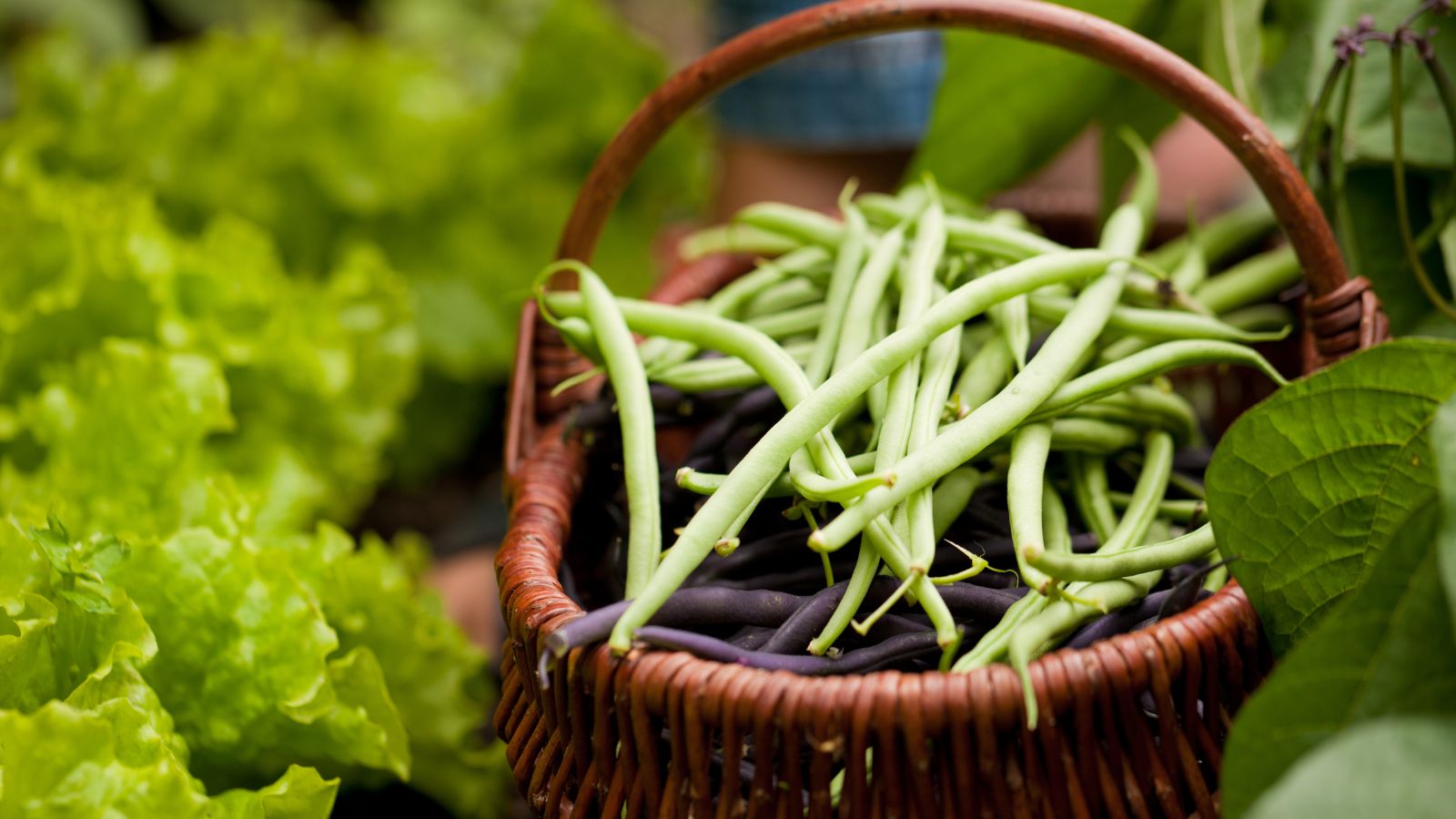
Image credit: YAY Images.
Snap beans and pole beans are both great options for bucket gardens. Both are easy to grow from seed without having to worry about sowing them inside or buying expensive starts at the nursery.
Snap beans are bush-type plants, so they’ll be happy in their bucket without support. Pole beans grow on vines, however, so they’ll need a trellis, like your cucumbers.
Lettuce
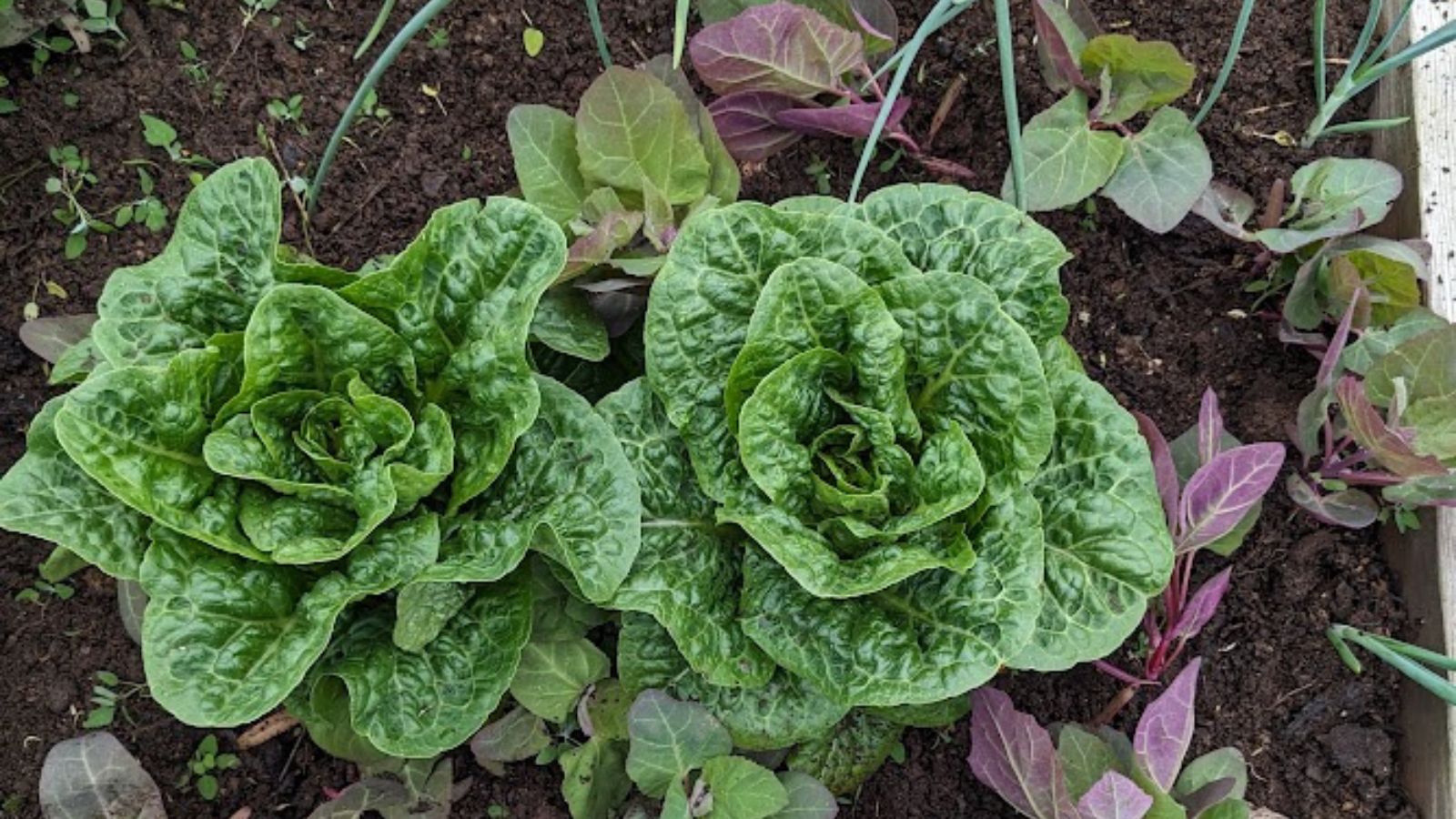
Image credit: Backyard Garden Lover.
Fresh lettuce is the start of many delightful summer salads; try planting beautiful red and green varieties for a pop of color and delicious flavors.
The Farmer’s Almanac assures that lettuce can also grow very happily in hanging pots or window boxes. Skip the traditional potted flowers and grow your summer salads there, instead!
Herbs
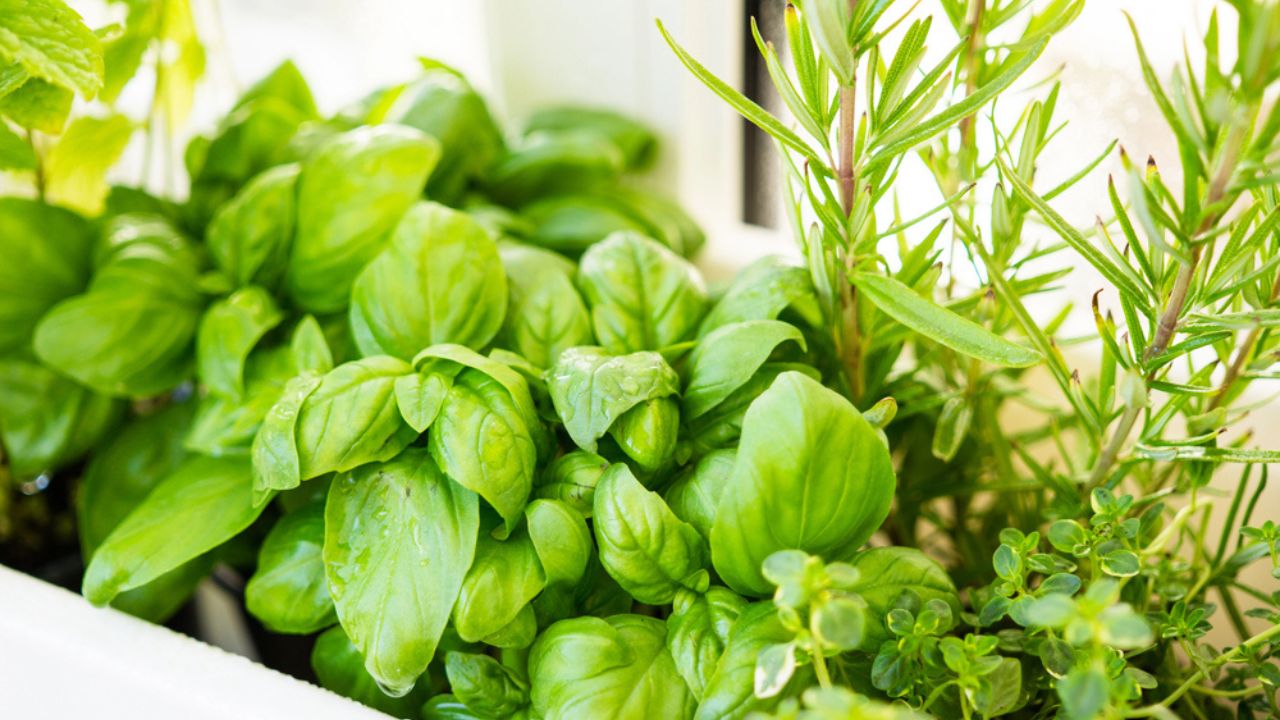
Image Credit: Deposit Photos
OK, not a vegetable, but still a valuable addition to your meals, and a beautiful addition to your container garden. These also look great in window boxes. For convenience, try growing herbs you use frequently in cooking in a container you can access easily from your kitchen. A few container-friendly culinary favorites are:
- Basil
- Rosemary
- Dill
- Cilantro
- Parsley
Think Outside the Bucket
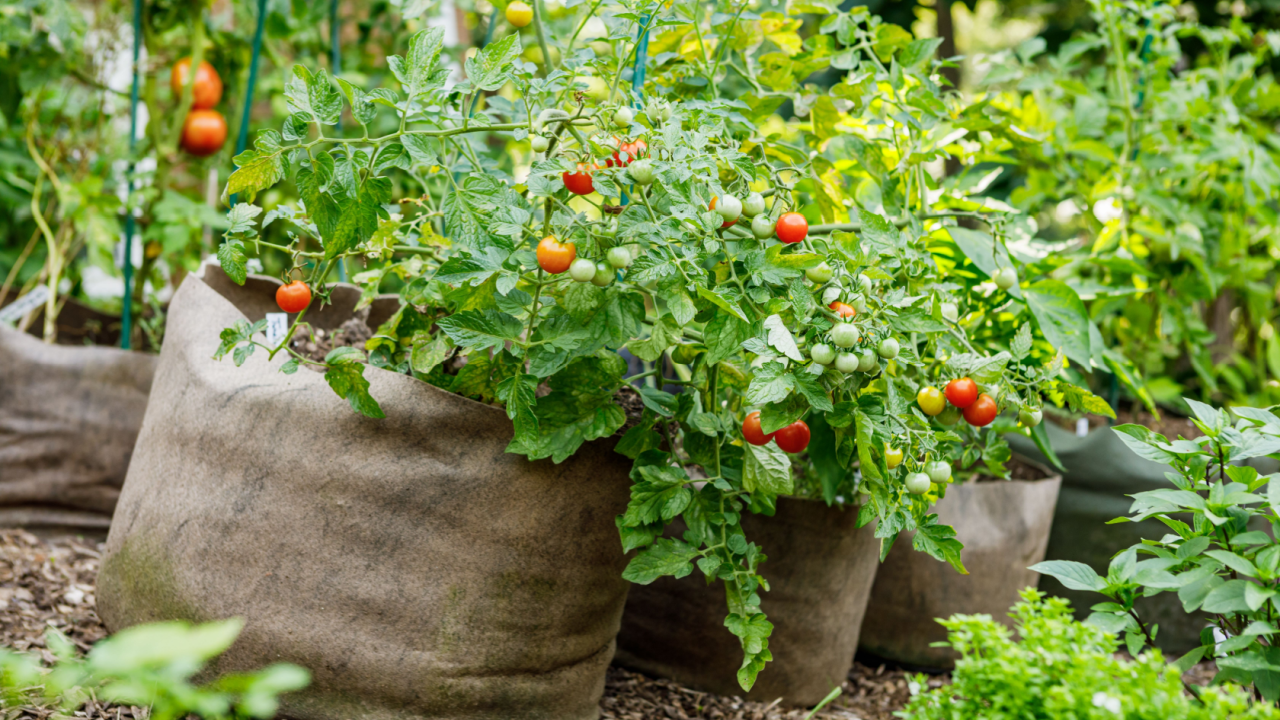
Image Credit: Shutterstock.
Keep in mind that you don’t actually have to limit yourself to buckets. You can purchase fabric grow bags, which maintain the no-weeding and easy-portability benefits of the bucket, and can offer additional aeration for roots (a real bonus if you are the type of gardener who tends to love your plants to death by overwatering them). This can be especially beneficial to root veggies like potatoes.
If you have a bit more space, half whiskey or wine barrels open up possibilities in terms of planting larger plant varieties, or even doing some companion planting.
Or skip buying a new container altogether, and just plant your veggies right in your bag of potting soil. Remember to cut some holes in the bottom for drainage. Then you can simply cut a few openings in the top side and plant your seedlings directly. Since this option means your soil isn’t very deep, stick to shallow-rooting vegetables like lettuce or squash.
Get Creative and Have Fun
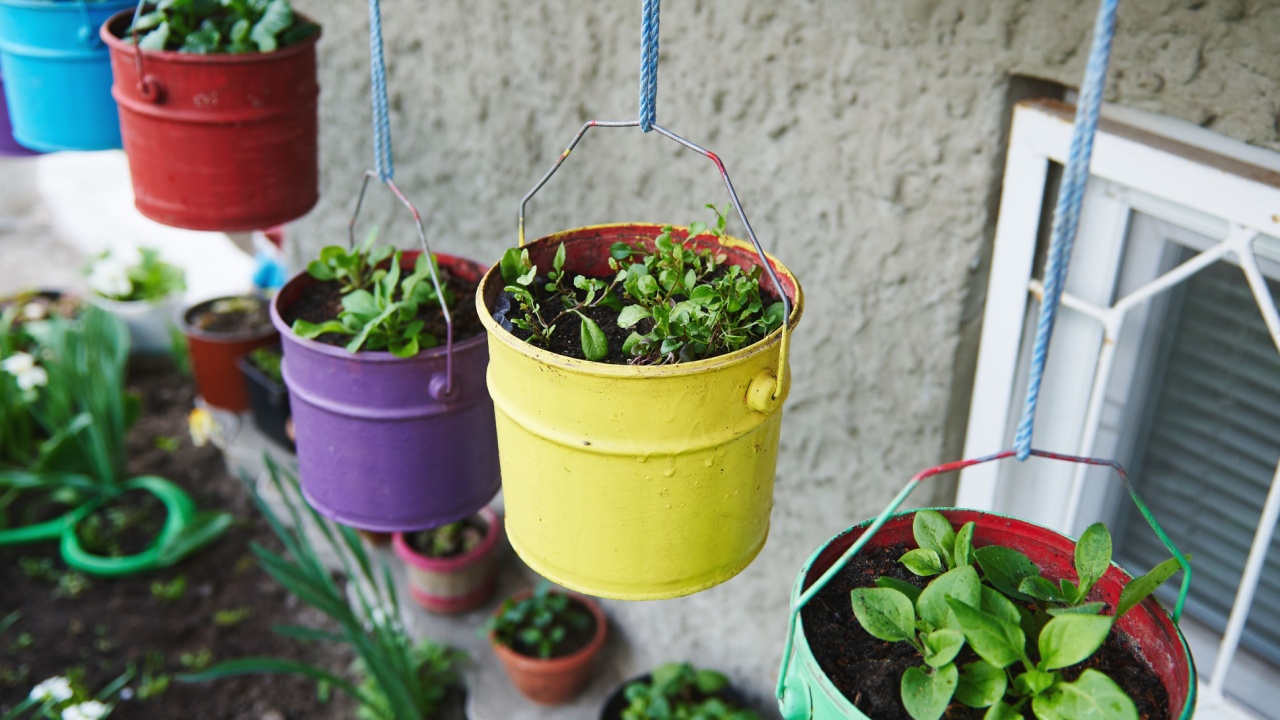
Image Credit: Shutterstock.
When planning a garden this season, don’t be deterred if you are short on space, time, or money. Making use of the space and tools (buckets) that you do have around the home is a great way to start growing.
There is something so empowering about picking your own produce that you cultivated and nurtured yourself. Plus, it’s such a great way to get fresh vegetables on the table. It’s a win-win. And all you have to do is get started.

